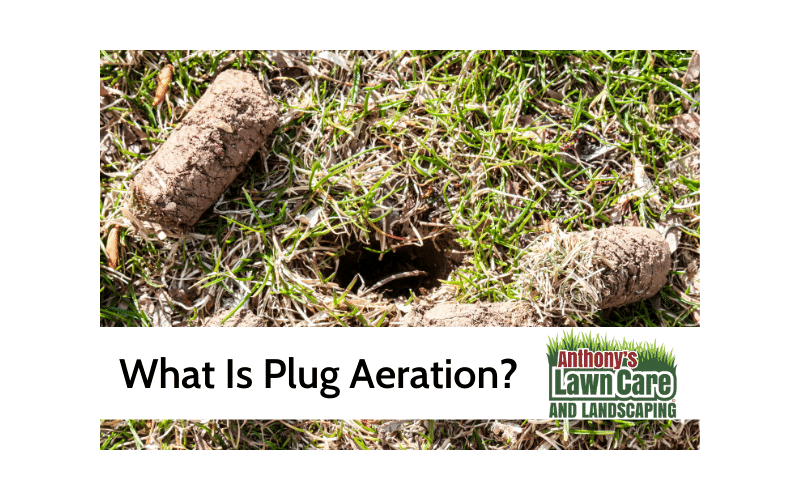What is lawn plug aeration?
If you’re just getting into DIY lawn care, you’ve likely heard the phrase “plug aeration” thrown around. It sounds pretty complicated, but like many things in lawn care, it can be explained in fairly simple terms.
The problem — compact soil
There’s really no way to avoid the fact that the soil under your grass is oriented towards becoming more compact over time. Just the fact that you walk across the yard and your children and pets play on it can lead to this issue. Even gravity is working against you!
So, what’s the big deal? The issue is that when soil is compact, water, air and nutrients can’t pass through to the roots. Your beautiful lawn will become suffocated over time. If you add grass seed to thin areas of your lawn, these seeds also won’t be able to break through to properly set in the dirt.
What should you do about it? Aeration
The ground is packed together too tightly, and there is no room for transfer of anything. What do you do? Give the roots some air. You do this by breaking through the hard ground and allowing a path down for the elements that have been held back.
But how you aerate actually matters almost as much as whether you aerate. There are three basic types you should be aware of — and only one that gets the job done right.
- Slice aeration: Because there is a layer of thatch and toughened dirt right along the surface, a slice aerator will use a machine with sharp blades to cut into the layer. This allows a path through the hard layer, but it doesn’t loosen the lawn’s dirt overall. It only pushes dirt down in the spots where the aerator slices; however, this actually compresses dirt on either side of these channels.
- Spike aeration: This is done with machines, poles or even spiked shoes. This is an example of a push aerator you can buy. The spikes penetrate the hardened layer, and, like slice aeration, offer a path through it. Also like slice aeration though, the dirt right around the penetrating metal is just compacted as it’s pushed away. Once it decompresses, you’re left in the exact same position.
- Plug aeration: This third method is the right way. A plug aerator actually pulls out little plugs of dirt, usually about three inches long and half-an-inch wide. Here is a tow behind plug aerator if you are in the market. These are then dropped back on the lawn to work their way into the soil from above. But with the dirt actually removed from the places the thatch was penetrated, the ground around the holes can loosen and move into the hole. The dirt is given the opportunity to breathe and spread out some, allowing a longer-term solution and path for water, nutrients and air.
Does my lawn need plug aeration though?
Because this problem is predictable, everyone’s lawn will need it and you shouldn’t wait for the problem to get too far along. You need to have a plan in place for how to regularly combat it. The best time to aerate, at least for cool-season grasses like we have here in Indiana, is during the growing seasons of early spring and early fall. Make a plan to aerate at least once, if not twice, per year.
If you live in the Bloomington area, Anthony’s has the equipment and expertise to do the job right. Give us a call at (812) 345-5694 to learn more.


Recent Comments